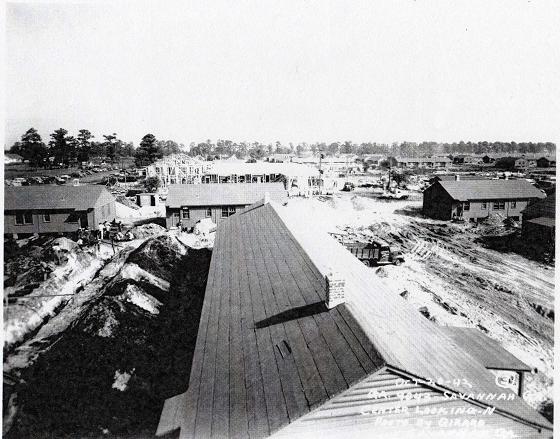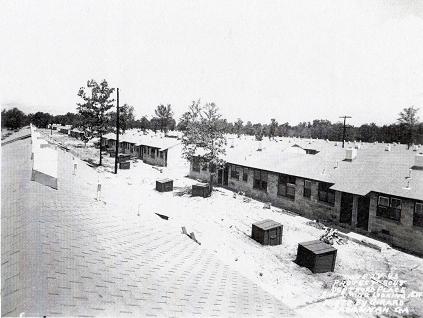|
Other Housing for the Southeastern Shipbuilding Corporation Workers [The Moses Rogers Grove, Josiah Tattnall Homes, and Deptford Place neighborhoods] |
[Pine Gardens NR Project] [Pine Gardens Neighborhood History] [SE Shipbuilding Corp. History]
 |
 |
 |
| Josiah Tattnall Homes, during construction | Moses Rogers Grove, during construction | Deptford Place, during construction |
| Click right to see an album of vintage photos of these three "War Housing" neighborhoods >> | Photos - Remember to click & enlarge them! |
| Click right to see 1954 Sava'h City Directory Listings for Pine Gardens & adjacent neighborhoods >>> | |
| Click right to read the pages of the January 1946 report of the Housing Authority of Savannah >>> | January 1946 HAS Report |
| "WAR HOUSING NEEDED"
Early in World War II, the Housing Authority of Savannah, noting large influxes of workers coming to Savannah to build ships for the US military, recognized the need for large numbers of "War Housing" units. "War Housing" meant temporary housing. The narrative below was helpfully provided by the Housing Authority of Savannah, in a January 1946 report: Since the Authority's policy is never to enter a field that can be handled by private enterprise, the Authority sat back and waited for the private syndicates to act. Six months passed. Personnel managers began to worry out loud about turnover. Men were quitting because they could not find decent shelter. The out-of-town builders, it seemed, had found that a housing project was easy to promise, hard to deliver. One syndicate did succeed in building 386 homes in the Pine Gardens development, and several smaller projects were completed. But the supply was far below the demand of a population pushing toward the peak of 175,000 reached in December 1944. That was why the Housing Authority moved in and built seven war housing projects with a total of 2,975 homes. The big war housing operation should not be confused with the low-rent housing program. Most of the war housing is of temporary construction and is scheduled for removal at an early date. All of the war housing is owned by the federal government, whereas the low-rent projects are owned by the Housing Authority. The Savannah Authority has simply acted as the agent of the federal government in building and managing the 2,975 homes for migrant war workers and military personnel. Normal rents are charged; the equivalent of normal taxes is paid. There is of course no subsidy as in low-rent housing. Here is the record of the war housing program: (Editor's note: only that portion related to the Southeastern Shipbuilding Corp.'s workers is included.) JOSIAH TATTNALL HOMES 750 homes built in 5 months These single story demountable frame dwellings were built on East Gwinett Street, northeast of Twickenham Terrace, to house employees of the Southeastern Shipbuilding Corporation. The project is within walking distance of the shipyard. Commodore Josiah Tattnall of the United States Navy is remembered for five words sent from China in 1859. When the British fleet was defeated at the mouth of the Pei-ho River, the commodore gave aid that violated neutrality. His explanation was, 'Blood is thicker than water.' The American government upheld him. The Tattnall plantation, Bonaventure, is now Bonaventure Cemetery. (Construction was completed in January 1943.) MOSES ROGERS GROVE 150 Homes Built in 4 Months Of two-story balloon frame construction, these dwellings on President Street East were also designed for Southeastern Shipbuilding Corporation workers. The project was named for the skipper of the Savannah, the first steamship to cross the Atlantic. (Construction was completed in January 1943.) DEPTFORD PLACE 850 Homes, Built in 7 1/2 Months Single-story row houses of cinder block construction, Deptford Place was the third project built to enable Southeastern Shipbuilding Corporation to attain a peak employment of close to 16,000 workers. The project adjoins Josiah Tattnall Homes on the east. It was named for the old Deptford Plantation where rice was cultivated a century ago. (Construction was completed in September 1943.) |